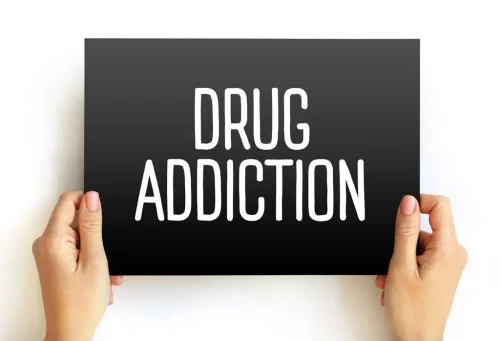
Recently, however, it has been discovered that GABAA receptors containing the δ subunit, in particular α4β2δ (36) and α6β2δ (37) receptors, are exceptionally sensitive to ethanol. Because δ subunit–containing GABAA receptors have a highly specific regional distribution, the lack of uniformity in the experimental results is now understandable. Indeed, brain regions that express δ subunits, including the cerebellum, cortical areas, thalamic relay nuclei, and brainstem (38), are among those that are recognized to mediate the intoxicating effects of alcohol. Mody (39) has proposed that such δ subunit–containing GABAA receptors are located largely perisynaptically or extrasynaptically, where they mediate tonic inhibition of neurons by ambient GABA. The functional role of tonic GABA current is still obscure (40), but the current could act to reduce network oscillations (41). Potentiation of extrasynaptic GABA receptors likely contributes to the anticonvulsant activity of ethanol, including its protective activity against alcohol withdrawal seizures.

What are the symptoms of alcohol withdrawal?
- Hybrid treatment programs provide the structure of a residential program while allowing the client to return home in the evening only to sleep.
- Although it may not be possible to avoid bloating and other symptoms after drinking, avoiding drinks that can cause bloating and cutting back on drinking may help.
- That will help you decide on the best plan to stop drinking, with support which can include specific prescription medication to take during your withdrawal.
- Moreover, unlike the benzodiazepines, these antiseizure medications are not potential drugs of abuse.
- If you have a more severe chemical dependence on alcohol, you may experience more severe symptoms more quickly.
The problem generally escalates over time, and the health and safety risks also escalate. Getting treatment early can resolve the pattern of alcohol abuse before the individual experiences impaired health, compromised safety, and other negative effects on his or her quality of life and relationships. The decision not to include vital signs was based on data showing that pulse and blood pressure did not correlate with the severity of alcohol withdrawal than the other signs and symptoms included in the CIWA-Ar. Alcohol withdrawal seizures typically develop 6-48 hours after you stop drinking, but they can occur 2-7 days after your last drink. The seizures can develop abruptly without warning, and multiple seizures can occur within a 6- to 8-hour period. Treating alcohol withdrawal is a short-term fix that doesn’t help the core problem.

What is the mortality rate of alcohol withdrawal syndrome?
The short-term effects of alcohol result from its actions on ligand-gated and voltage-gated ion channels (2–4). Prolonged alcohol consumption leads to the development of tolerance and physical dependence, which may result from compensatory functional changes in the same ion channels. Abrupt cessation of prolonged alcohol consumption unmasks these changes, leading to the alcohol withdrawal https://ecosoberhouse.com/ syndrome, which includes blackouts, tremors, muscular rigidity, delirium tremens, and seizures (5,6). Alcohol withdrawal seizures typically occur 6 to 48 hours after discontinuation of alcohol consumption and are usually generalized tonic–clonic seizures, although partial seizures also occur (7,8). Not everyone who experiences alcohol withdrawal will experience delirium tremens.

Why it Is Important to go to Medical Detox for Alcohol Withdrawal?
A majority of patients are left with an abnormal gaze, persistent ataxia, and a potentially disabling memory disorder known as Korsakoff’s syndrome. Although fewer than 5 percent of patients initially exhibit a depressed level of consciousness, the course in untreated patients may progress through stupor, coma, and death. Nutritional status should be closely monitored during treatment of acute AW to prevent Wernicke-Korsakoff syndrome (for more details, see the article by Myrick and Anton, pp. 38–43). If you get withdrawal symptoms, you will need medical support to help you reduce and stop your drinking. That will help you decide on the best plan to stop drinking, with support which can include specific prescription medication to take during your withdrawal.
Cellular Mechanisms of Alcohol Dependence
The term alcohol use disorder (AUD) refers to a spectrum that includes varying degrees of alcohol abuse, dependency, and addiction. Alcohol use becomes disordered when the individual has difficulty controlling or stopping his or her alcohol consumption. Substance use disorder includes what people commonly think of as alcoholism. Many dependent drinkers can stop drinking without experiencing severe withdrawal. However, intercurrent illness (trauma, fever, hypoxia) can contribute to severe withdrawal.
Alcohol withdrawal begins within approximately 8 hours of abstinence and peaks in intensity on the second or third day; symptoms usually diminish by the fourth or fifth day. All heavy drinkers admitted to hospital should be monitored for the emergence of symptoms and signs indicating withdrawal, many hospitals using a structured withdrawal scale to monitor newly admitted patients. Seek help at a professional addiction treatment facility if you have problems controlling your drinking.
Alcohol and Antiepileptic Drugs

We offer a combination of proven therapies and services to meet your individual needs. We are also equipped to treat co-occurring disorders such as depression, anxiety disorders, PTSD and others. By Amber J. TrescaTresca is a freelance writer and speaker who covers digestive conditions, including IBD.

Wernicke-Korsakoff Syndrome
Studies show support groups play an instrumental role in helping people develop healthy social networks that result in continued sobriety. There are many support options available that can help guide you through alcohol withdrawal, as well as abstaining from alcohol after withdrawal. For those with alcohol use disorder, withdrawal is just the first (but very important) step on a long journey to recovery. These first few weeks are critical because they are when the risk of relapse is highest. When GABA comes to bind to the nerve cell, it opens up a channel to a negative charge that slows down brain activity. Alcohol and other central nervous system depressants keep that channel open, causing more intense sedating effects.
Over time, if you regularly drink heavily, the central nervous system gets used to the supressing effect of the alcohol, which means your brain is affected if the alcohol level suddenly drops. You can go straight into’ fight or flight’ mode as the alcohol leaves your system, even alcohol withdrawal seizure when there’s no danger present. If you think you’re dependent, you must seek medical help and talk to a health professional at your GP surgery about how to reduce your drinking. Withdrawal symptoms can be physical and psychological, and range in severity from mild to severe.
Support Groups
Treatment can also lower your risk of related problems such as alcohol seizures. Alcohol withdrawal seizures typically occur 6 to 72 hours after you stop drinking and there is a rapid drop in blood alcohol concentration. Another thing to keep in mind is that alcohol and anti-seizure medications can cause similar side effects, such as fatigue, drowsiness, dizziness, and blurred vision. Therefore, drinking alcohol while on antiepileptic drugs can make these adverse effects more severe. For the same reason, anti-seizure drugs can also lower alcohol threshold, meaning a smaller amount of alcohol than usual can cause intoxication, when alcohol intake is combined with antiepileptic treatment. While you’re in inpatient treatment, you may also be treated with IV fluid, which can help keep you hydrated through the withdrawal process.